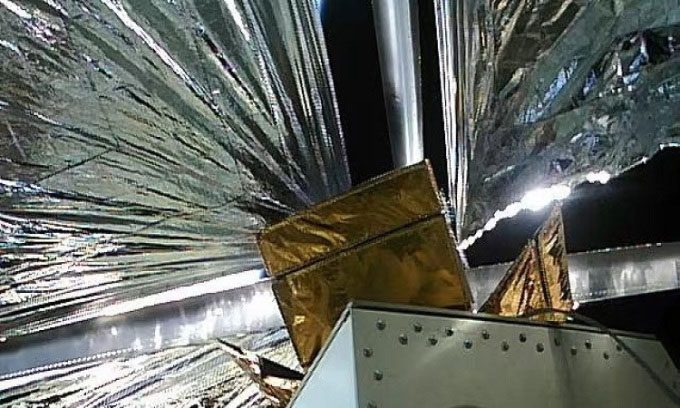Chinese scientists have successfully deployed a drag sail to help remove one of the recently launched Long March 2 rockets from orbit, contributing to the reduction of space debris.

The drag sail attached to the Long March 2 rocket helps the rocket’s final stage fall to Earth faster. (Photo: Weibo)
The drag sail expands to 25m2 when fully deployed and is extremely thin, only 1/10 the diameter of a human hair, according to Science and Technology Daily. This kite-like membrane is designed to increase atmospheric drag and accelerate the descent of the 300 kg final stage of the rocket from orbit. The Long March 2 rocket was used to launch remote sensing satellites into orbit last month and subsequently became space debris. This drag sail is the largest developed by China in an effort to address the increasingly prevalent issue of space debris.
It is estimated that over a billion pieces of debris are floating around Earth, with two-thirds of that located in low Earth orbit, where most spacecraft operate. Small satellite constellations like SpaceX’s Starlink and Amazon’s Kuiper are raising growing concerns about the future space debris crisis.
The drag sail could become a promising solution to the space debris problem due to its low cost and mature technology, making it usable with any satellite in low Earth orbit. With high flexibility and ultra-lightweight, the drag sail can be folded and attached to a spacecraft before launch. Afterward, it will automatically deploy at the end of the mission, facilitating a much quicker recovery of the spacecraft compared to natural descent.
For example, a 15 kg satellite operating at an altitude of 700 km can remain in orbit for 120 years after its mission ends. However, a 2m2 drag sail could reduce that time to less than 10 years. The drag sail attached to the Long March 2 rocket will help the final stage re-enter Earth’s atmosphere within 2 years. This device was developed by the Shanghai Academy of Aerospace Technology, a part of the China Aerospace Science and Technology Corporation. Tests on small satellites worldwide have laid a solid foundation for the production and industrial deployment of drag sails.
The Long March 2 rocket was launched on June 23 from the Xichang Satellite Launch Center in southwestern China. The rocket carried three remote sensing satellites into low Earth orbit to conduct scientific experiments, land surveys, resource assessments, and disaster prevention efforts.





















































